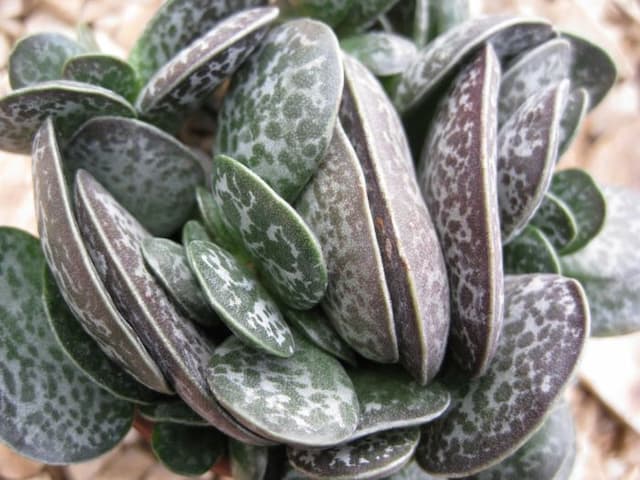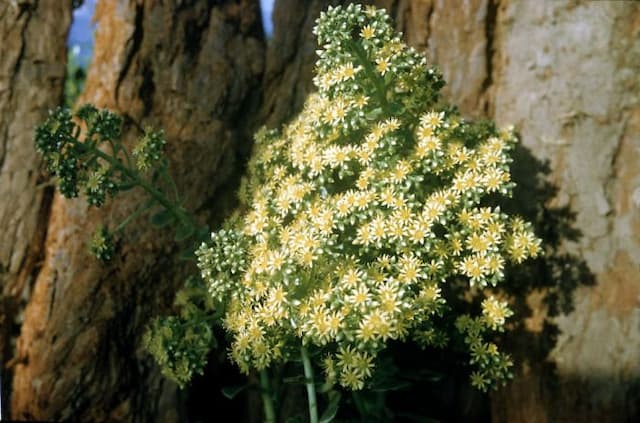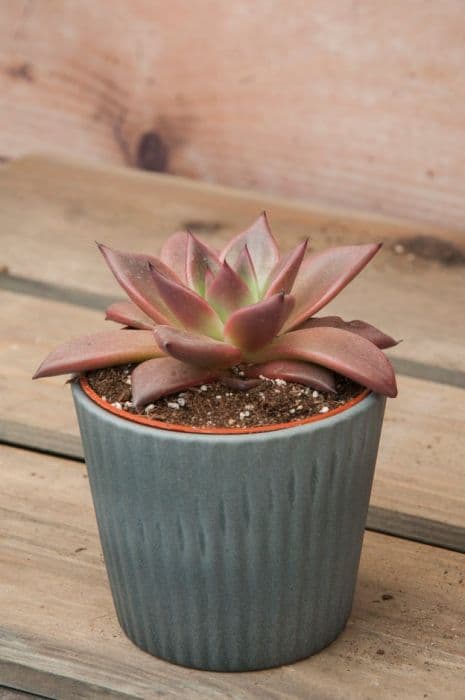Grandfather's watch chain Crassula multicava











ABOUT
C. multicava is a succulent perennial, bushy or sprawling, with slightly rounded leaves marked with pitted, dark green spots. Sprays of small, star-shaped pinkish-white flowers are carried above the foliage in spring. Overall height 10-20cm
About this plant
 Names
NamesFamily
Crassulaceae
Synonyms
Fairy Crassula, London Pride, Cape Province Pygmyweed, Pitted Crassula
Common names
Crassula multicava subsp. rattrayi, Crassula rattrayi.
 Characteristics
CharacteristicsLife cycle
Perennials
Foliage type
Evergreen
Color of leaves
Green
Flower color
Pink
Height
1 feet (0.3 meters)
Spread
2 feet (0.6 meters)
Plant type
Succulent
Hardiness zones
9
Native area
South Africa
Benefits
 General Benefits
General Benefits- Low Maintenance: Crassula multicava, commonly known as Fairy Crassula, requires minimal care, making it suitable for gardeners of all skill levels.
- Drought Tolerance: Fairy Crassula has succulent leaves that store water, allowing it to withstand periods of drought.
- Ornamental Value: This plant has attractive foliage and produces small, star-shaped flowers that enhance the visual appeal of gardens and indoor spaces.
- Ground Cover: Fairy Crassula can spread quickly, forming a dense mat that helps suppress weeds and cover bare patches in gardens.
- Easy Propagation: It can be easily propagated from leaf cuttings or offsets, making it simple to expand your plant collection or share with others.
- Versatility: The plant can be grown both outdoors and indoors, in pots or directly in the ground, offering flexibility for various landscaping and decorative needs.
- Suitable for Containers: Its compact size makes Fairy Crassula an excellent choice for container gardening, including small spaces and balconies.
- Attracts Wildlife: The flowers of Fairy Crassula may attract pollinators such as bees and butterflies, promoting biodiversity in gardens.
 Medical Properties
Medical PropertiesThis plant is not used for medical purposes.
 Air-purifying Qualities
Air-purifying QualitiesThis plant is not specifically known for air purifying qualities.
 Other Uses
Other Uses- Groundcover: Crassula multicava, commonly known as fairy crassula, is often used as an attractive, low-maintenance groundcover in gardens due to its mat-forming growth habit that effectively covers bare spots.
- Living Mulch: Fairy crassula acts as a living mulch, conserving soil moisture and suppressing weed growth around other plants in garden beds or containers.
- Erosion Control: Due to its dense and spreading foliage, it can help stabilize soil and prevent erosion on slopes or banks.
- Stepping Stone Filler: Fairy crassula can be planted between stepping stones or pavers to create a lush, green pathway that can tolerate light foot traffic.
- Hanging Baskets: This plant's cascading nature makes it suitable for growing in hanging baskets, adding a vertical element to gardens or balconies.
- Green Roof Planting: The low-maintenance and hardy characteristics of fairy crassula make it an ideal choice for green roof installations, where it can thrive with minimal care.
- Aquatic Gardening: Although not an aquatic plant, fairy crassula can sometimes be used in the marginal areas of ponds and water features where the soil is consistently moist.
- Insect Habitat: The dense foliage of fairy crassula provides hiding spots and habitat for beneficial garden insects like ladybugs and lacewings.
- Photography Prop: Fairy crassula’s geometric leaf patterns and delicate pink blossoms are photogenic, making it a popular choice for plant photography enthusiasts.
- Plant Companion: Fairy crassula is sometimes used as an understory plant in container gardens, complementing taller plants with its lush foliage.
Interesting Facts
 Feng Shui
Feng ShuiThe Fairy Crassula is not used in Feng Shui practice.
 Zodiac Sign Compitability
Zodiac Sign CompitabilityThe Fairy Crassula is not used in astrology practice.
 Plant Symbolism
Plant Symbolism- Prosperity: Commonly known as Fairy Crassula, this plant is often associated with wealth and abundance, similar to many other members of the Crassula family, because of its lush, green foliage that represents growth and renewal.
- Resilience: Fairy Crassula is a hardy plant that can thrive in a variety of conditions. This resilience makes it a symbol of enduring through challenges and having the ability to overcome obstacles.
- Friendship: With its spreading nature and easy propagation, Fairy Crassula can also symbolize the expansion of networks and friendships, as it can be shared easily among friends and grow from small cuttings.
- Perseverance: Its ability to propagate from fallen leaves symbolizes persistence and the concept that even when things fall away or seem lost, new growth and opportunities can arise.
 Water
WaterFairy Crassula requires moderate watering, usually every 1 to 2 weeks, depending on the environmental conditions. When watering, thoroughly drench the soil until water runs out of the drainage holes, using approximately 8 to 16 ounces for smaller pots or up to 1 gallon for larger containers—enough to ensure the root area is moist. Allow the soil to dry out partially between waterings, as overwatering can lead to root rot. During the winter dormant period, reduce watering frequency to prevent the soil from remaining too wet.
 Light
LightFairy Crassula thrives best in bright, indirect light conditions, but it can tolerate some direct morning sunlight. It should be placed in a location where it is protected from the harsh afternoon sun to prevent leaf scorch. An ideal spot for Fairy Crassula is near an east-facing or north-facing window that receives plenty of light throughout the day without exposure to extreme, direct sunlight.
 Temperature
TemperatureFairy Crassula is best kept in temperature conditions ranging from 60 to 75 degrees Fahrenheit. It can withstand temperatures down to about 50 degrees Fahrenheit and should be protected from frost, which could cause damage. The ideal temperature range promotes healthy growth and avoids stress from too much heat or cold.
 Pruning
PruningPruning Fairy Crassula is mainly for shaping or to remove any damaged or diseased leaves and stems. Prune as needed, typically once or twice a year, preferably during the spring before the growth season begins. This helps maintain the plant's appearance and encourages bushier growth.
 Cleaning
CleaningAs needed
 Soil
SoilFairy Crassula prefers well-draining soil with a mixture of cactus potting mix and perlite in a 2:1 ratio, and an ideal pH level should be around 6.0 to 7.0 for optimal growth.
 Repotting
RepottingFairy Crassula should be repotted every two to three years to refresh the soil and allow room for growth; however, as a slow-grower, it can often be left longer if not root-bound.
 Humidity & Misting
Humidity & MistingFairy Crassula is tolerant of a wide range of humidity levels but thrives best in average room humidity, without the need for any special humidity adjustments.
 Suitable locations
Suitable locationsIndoor
Place Fairy Crassula in bright, indirect light indoors.
Outdoor
Grow Fairy Crassula in a spot with dappled sunlight outdoors.
Hardiness zone
9-11 USDA
 Life cycle
Life cycleCrassula multicava, commonly known as fairy crassula, begins its life cycle as a seed, germinating in favorable conditions of moisture and temperature. After germination, the seedling emerges and starts to develop roots and leaves, entering a vegetative growth phase where it establishes a solid root system and foliage. The plant will then mature and enter the reproductive stage, producing small pink to white flowers typically in late winter to spring. Following pollination, these flowers will develop into tiny seed capsules that release seeds when mature, completing the sexual reproduction cycle. Meanwhile, fairy crassula can also reproduce asexually through vegetative propagation, where new plants can grow from leaf cuttings or fallen leaves that take root naturally. Over time, as the plant ages, it may experience senescence, where old leaves wither, and if the core remains healthy, it can continue this life cycle for many years.
 Propogation
PropogationPropogation time
Spring-Early Summer
Crassula multicava, commonly known as fairy crassula, is a succulent that can be easily propagated primarily through leaf cuttings, a popular method due to its simplicity and effectiveness. To propagate fairy crassula using leaf cuttings, select healthy leaves from the plant, gently twist them off ensuring you get a clean break from the stem. Allow the leaf cutting to callous over for a few days in a warm, dry area, which helps prevent rot when planted. After the cut end has dried out, place the leaf on top of a soil mix formulated for succulents and simply mist the soil to keep it slightly moist. In a few weeks, you should see tiny roots and possibly new growth emerging from the base of the leaf, at which point you can start lightly watering them. This method is not only popular due to its ease but also because it offers a high success rate with minimal effort.









